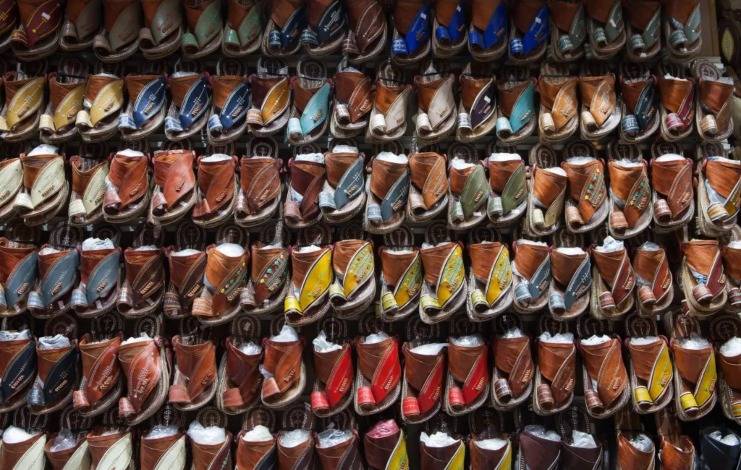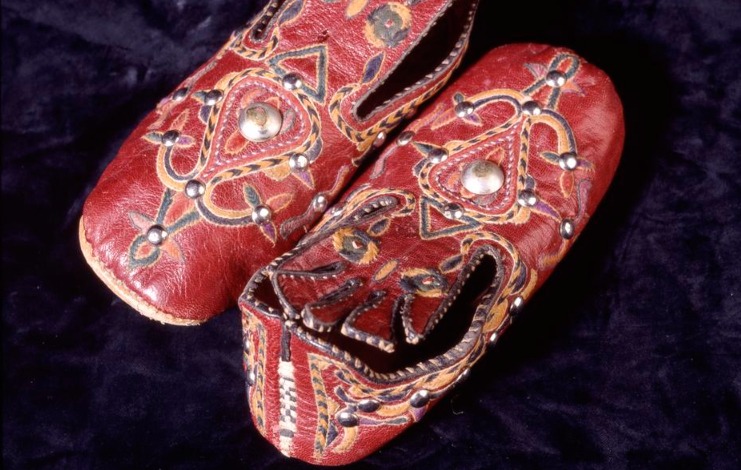The Middle East loves keeping traditions going; we like to hold on to our culture no matter what, and that can be reflected in all kinds of different things, from what we do to what we wear, including some iconic footwear, to say the least.
In celebration of Flip-flop day, we have five of the most traditional shebshebs that withstood the test of time and can be found within the MENA region to this day.
While the one you’ll most likely remember is the flip flop your mom perfectly aimed at your head when you were little, don’t worry we’re going with traditional ones, so no trigger warning required.
Saudi Madas
Worn by both royalty and the normal man, the Saudi “Madas” is an icon that is still worn by Saudi men to this day.
They were originally made out of camel leather, which is a no-brainer since they used whatever resources they had back in the day. However, with time and trade, that changed, leading to a multitude of different versions of the footwear made out of different leathers.
Its design was to accommodate the region’s sandy nature; you wouldn’t want to wear enclosed footwear with socks in a hot climate, would you? That was solved by leaving several open spots that let the feet breathe.
The concept behind the madas featured a large ring to encase the toe and make sure the slipper doesn’t slip off; it also had a large strap similar to that of a flip-flop to keep it protected and in place, which is perfect for anyone riding a camel or horse during the olden days.
Saudi Arabia still has artisans to this day, who custom make the madas by hand for their clients, with their prices ranging everything from tens of riyals to a few hundred, according to the materials used and the labor needed to make it.
It’s hard to see the madas going away anytime soon, which is a good sign, proving that adaptable design and comfort can bring longevity.

Egyptian Qabqab
Named after the sound it makes when walked with, the qabqab is basically the Middle Eastern version of a clog; early recordings of the qabqab date back to the Fatimid dynasty that ruled Egypt from 909 to 1171 CE.
Artisans used to make the qabqab from a singular block of wood usually Platanus, walnut, ebony, or sandalwood, which was carved into the design that has a rounded heel and protruding front, finally, some sort of strap was attached at the top so the people could wear it.
As for why the qabqab was created, we can thank bathhouses aka hammams for that! Egyptians at the time would go to these hammams to clean themselves, sometimes conduct business, and relax.
That said, these bathhouses had heated marble floors, which became so hot that it became uncomfortable to stand on, that’s not to mention all the washing that’s led to soap, oils, and other materials spilling onto the floor, making it slippery. The solution was footwear that had a wooden base that elevated people from the hot floors and wouldn’t slip from the excess liquids.
One of the most famous stories from Egypt related to the footwear is how one of the country’s monarchs, Shajar Al-Durr, was murdered in her private hammam when her assailants used several qabqabs as weapons.
The qabqab would later find its way to other countries in the region including Iraq, and Syria. Unfortunately, with indoor plumbing and home showers, the qabqab died out for the most part, but some mosques still use it today in washing areas.
Libyan Tarkasin
A traditional slipper that is exclusively worn by the bride on her wedding day, it’s made from leather that’s dyed into a deep red and is heavily embroidered with all kinds of different ornaments.
Protection is the main concept behind these slippers, as they commonly have metal studs to ward off harmful spirits or forces, and to avoid the evil eye; the tongue of the slipper is cut into the shape of a hand with five fingers, aka the “Khamsa,” or “Hand of Fatima.”
The “Khamsa,” or “Hand of Fatima” icon is famous throughout the Middle East and North Africa and is usually represented in jewelry most of the time, so it’s interesting to see it evolve and be placed within wardrobes too.

Yemeni Scorpion Sandals
Yemen has a lot of desert lands, even a part of it is situated within the Empty Quarter so it’s not a stretch to imagine that if a nomad or traveler is moving within these areas, they’ll do whatever it takes to stay safe, especially when they know that there are snakes or scorpions around.
That’s why Yemeni tribes in the area designed a piece of footwear that not only protects the wearer’s feet from the harsh sands, but also from the dangerous and poisonous scorpions they might encounter on their way.
The scorpion sandals are made with a leather upper that has a unique flap, which makes a sound with each step that scares scorpions and snakes lurking within the sands; even if the flap doesn’t do its job, the leather upper is thick enough to take a scorpion tail strike and not have it make contact with the skin.
The scorpion sandals are still being used today in parts of Yemen, and also became popular in northern neighbor Saudi Arabia.
Moroccan Babouche
An important part of the traditional Moroccan dress, the babouche, also known as the “balgha,” is made from soft leather, which can either be camel, cow, or goat. Back in the day it usually had very limited colors, however, all that changed when dyes were introduced creating colorful versions.
Even though you can still get it today with just plain colors, there are other offerings with intricate details and unique designs, just make sure that you get a hand-tailored one.
Travelers love the slipper so much that a manufacturing boom started in the company years ago, with factories built just to make them; on the other hand, the city of Fez relied on the more traditional methods, so if you’re planning to get one as a souvenir buy one from there.
That said, be respectful when wearing one, because it’s heavily ingrained with the Moroccan identity, and since it’s mostly worn during religious celebrations.

WE SAID THIS: Don’t Forget… Blending Taste & Fashion: Adidas’ Latest Collab Is Ravi, Dubai’s Iconic Restaurant





